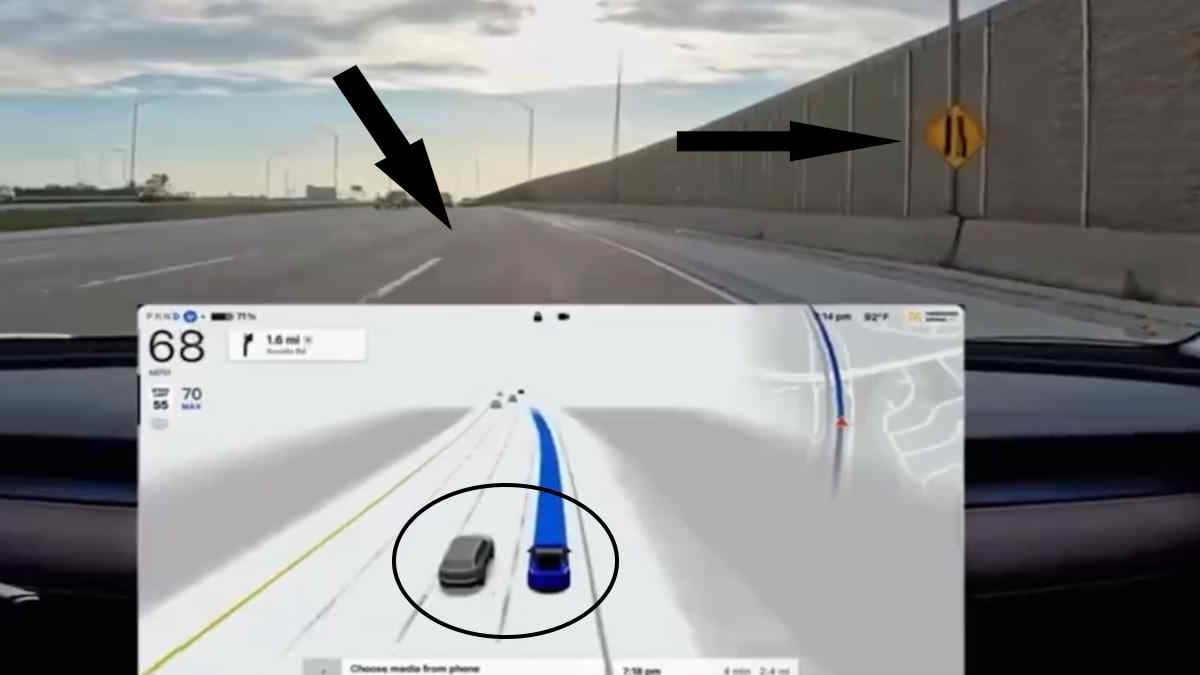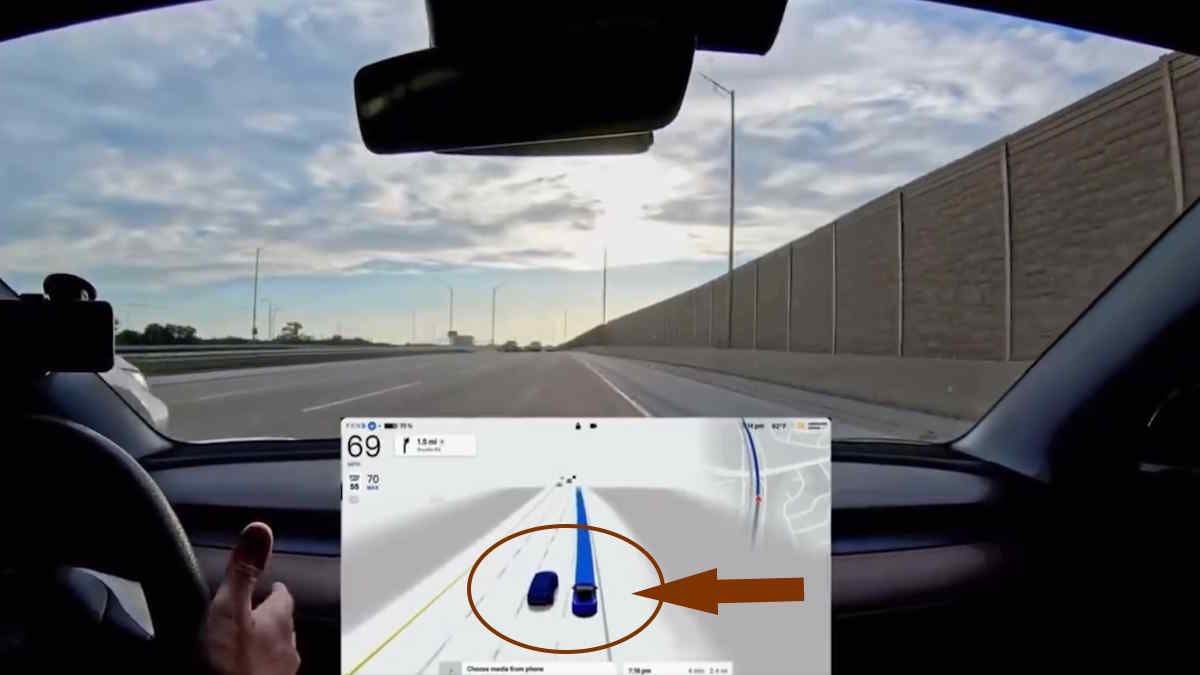FSD Merge Almost Caused A Collision - What Should Have Happened?
Tesla's FSD software is getting better over time. There are many videos with 0 intervention drives and 0 disengagements. In fact, many times each day while driving around, I don't have to do anything with FSD, but simply let it drive me to where I'm going. I only take over once I get to the parking lot.
A situation happened via video recently, From TechGeek Tesla, who showed a Tesla, which may have been his, using FSD software on the highway in a merge lane. This merge lane takes two lanes and turns them into one lane. There was no exit or entrance from the freeway that caused this merge - it simply was a narrowing of the freeway to 3 lanes from 4.
Merge lanes are a fact of life of the roads, and so situations where merging needs to take place need to be handled. FSD has handled them well for me so far, but in this case, it did not. Here's what happened.
Joe Biden and the U.S. Government Just Don't Get Electric Vehicles Like Tesla Does: Joe Biden Snubs Tesla Once Againhttps://t.co/O41vE78yAy$TSLA @Tesla @torquenewsauto #evs #usa #unions #joebiden
— Jeremy Noel Johnson (@AGuyOnlineHere) June 19, 2024
The Tesla with FSD was in the far right lane on the freeway. Another car, which was probably a human driver, driving what appeared to be a Toyota, was in the lane next to the Tesla.
That other drive was behind the Tesla in the distance. That's the first important thing to note. As the merge was about to take place, the other car was now side by side with the Tesla, which created a "sticky situation". What I mean by that is when two cars are side by side next to each other, which one needs to get out of the way so the merge into one lane can happen?
If you look at right of way law, it generally says that the car that is in the resulting lane has the right of way and all other traffic needs to yield. However, if you have many cars executing a merge, it's not quite that simple and something called the zipper method is a great way to do it, with cars alternating with each other as the merge happens.
What happened here, is the car with FSD ended up driving on the shoulder of the road to the right, after the driver disengaged FSD and manually drove on the shoulder.
You May Also Like: Tesla Van - Camper Edition: What Tesla's Van May Be Like Including Pictures, Descriptions, and Price - As If Tesla Had It On Their Website
Who Was At Fault?
Jon (TechGeek Tesla) asked who was at fault here, and it's an interesting question.
The car in the lane to the left of the Tesla did not appear to see that a merge was about to take place. I'm not sure if Jon even knew the merge was going to happen, as the merge sign was right at the place the merge needed to take place, instead of being before it to give warning and allow time to get ready for the merge.
There was NO TIME with where the sign was to know that a merge was about to take place. Take a look at this image, which shows the tricky situation that was about to take place.

Second, the car in the lane to the left was several car lengths behind the Tesla vehicle and had that car simply stayed back, this situation wouldn't have happened. However, this car probably didn't know a merge was coming. But, if it DID KNOW and decided to speed up like this, that is a mistake in my opinion.
When looking at the general law of the rules of the road, the Tesla needed to yield to the car on the left when they were side by side. But, to say that that's how it should have been without seeing the other issues here would be quite wrong in my opinion.
Several things need to be done to fix this situation from happening again and they are:
The New Tesla Roadster Can Fly, Says Elon Musk: Does This Mean Really Fly Or Just Hover?https://t.co/KNRPgpUyxu$TESLA @Tesla @torquenewsauto #cars #evs #flyingcars #elonmusk #newroadster
— Jeremy Noel Johnson (@AGuyOnlineHere) June 16, 2024
- The merge road sign needs to be moved to be at least 50 feet sooner. There needs to be ample warning that a merge is coming.
- When there is a merge, cars need to react to the merge - both lanes. If a car with the right of way is further back, it should not speed up to merge ahead. The car without the right of way should slow down a little if it's side by side with the car with the right of way.
- Tesla's FSD software needs to be adjusted to handle this case. It should never drive near or side by side with another car, that's just dangerous driving and avoids this kind of thing from happening. In this case, I think it should have slowed down and not sped up like it did in this video well before the driver took over.
With these three things, the roads become safer and everybody avoids a catastrophic situation that could potentially happen.
I do believe Tesla will take this video and others merge videos and create training data. More important is that Tesla needs to make sure its FSD software avoids being near other cars when the traffic is sparse. There's NO REASON for it to ever be near another car in a video like this with such sparse traffic.
Now, in busy traffic, it's unavoidable, and it will need to navigate being around other cars.
Let's hope this sign gets move to be well before the merge lane here and any other signs that have this problem are fixed too.
For Further Reading: I've Heard Tesla's Sales Are Down...
What do you think about this case with Tesla FSD? What should have happened here?
Share this article with friends and family and on social media - or leave a comment below. You can view my most recent articles here for further reading. I am also on X/Twitter where I post more than just articles daily, as well as LinkedIn! Thank you so much for your support!
Who’s at fault here?
Is it Tesla’s FSD or is it the other car? pic.twitter.com/LuOvtVwRtg
— ⚡️TechGeek Tesla 🔋⚡️ (@jonbbc) June 23, 2024
Hi! I'm Jeremy Noel Johnson, and I am a Tesla investor and supporter and own a 2022 Model 3 RWD EV and I don't have range anxiety :). I enjoy bringing you breaking Tesla news as well as anything about Tesla or other EV companies I can find, like Aptera. Other interests of mine are AI, Tesla Energy and the Tesla Bot! You can follow me on X.COM or LinkedIn to stay in touch and follow my Tesla and EV news coverage.
Image Credit/Reference: TechGeek Tesla





